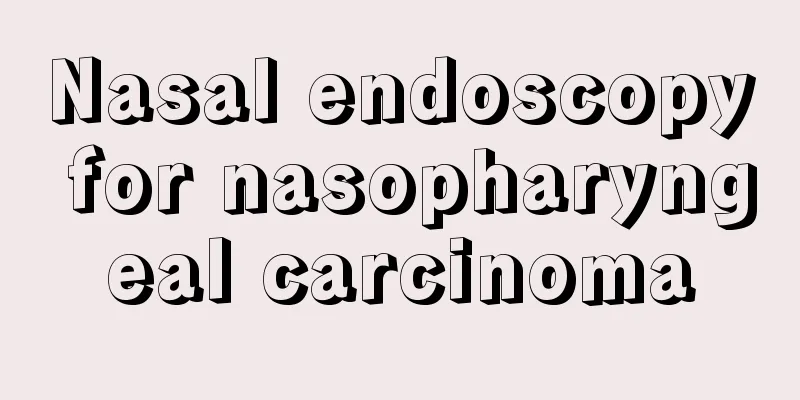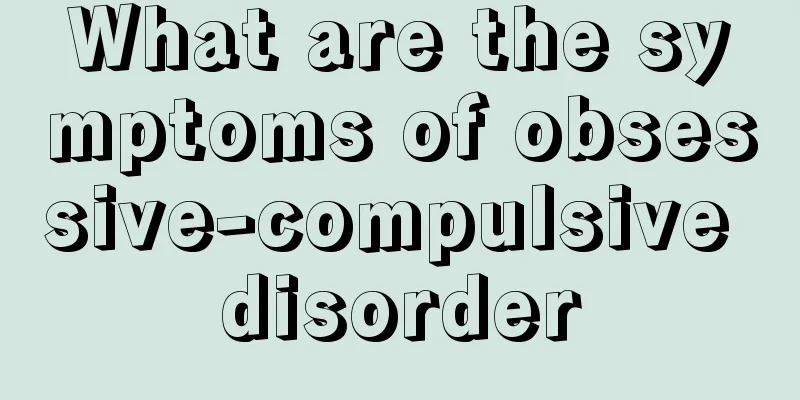Nasal endoscopy for nasopharyngeal carcinoma

|
As the weather gets hotter, it is not difficult to find that nasopharyngeal cancer has become a common disease, but many nasopharyngeal cancer patients are not aware of it, which makes the treatment of nasopharyngeal cancer more difficult. So, what examinations should nasopharyngeal cancer patients do? Let's answer it together below. 1. Anterior rhinoscopy: After the nasal mucosa is contracted, the posterior nasal cavity and nasopharynx can be viewed through the anterior rhinoscopy, and tumors that have invaded or are adjacent to the nostrils can be detected. 2. Indirect nasopharyngeal endoscopy: The method is simple and practical. Each wall of the nasopharynx should be examined in turn, with attention paid to the posterior wall of the nasopharyngeal roof and the pharyngeal recesses on both sides. The corresponding parts on both sides should be compared and observed. Any asymmetrical submucosal protrusions or isolated nodules on both sides should be paid more attention. 3. Fiberoptic nasopharyngoscopy: Fiberoptic nasopharyngoscopy can be performed by first using 1% ephedrine solution to contract the nasal mucosa and expand the nasal passages. Then, 1% dicaine solution is used to anesthetize the nasal passages on the surface, and then the fiberscope is inserted from the nasal cavity, and the microscope is pushed forward while being observed until it reaches the nasopharyngeal cavity. This method is simple and the mirror is well fixed, but the observation of the posterior nasal cavity and the anterior wall of the roof is not satisfactory. 4. Neck biopsy: For cases that have not been diagnosed by nasopharyngeal biopsy, neck mass biopsy can be performed. Generally, it can be performed under local anesthesia. During the operation, the earliest solid lymph node should be selected, and the capsule should be removed as a whole. If excisional biopsy is difficult, a wedge-shaped biopsy can be performed at the mass. The tissue must be cut to a certain depth and squeezed. At the end of the operation, the surgical field should not be sutured too tightly or too densely. The above information helps us understand the relevant knowledge of nasopharyngeal carcinoma. We should pay more attention to the prevention of nasopharyngeal carcinoma in our daily life and treat nasopharyngeal carcinoma as soon as possible. Through the above introduction, everyone should have some understanding of what examinations nasopharyngeal carcinoma patients should do. |
<<: What are the examination items for nasopharyngeal carcinoma
>>: The difference between allergic rhinitis and nasopharyngeal carcinoma
Recommend
Asthma diet recipes
Asthma was once called a disease of affluence bec...
Freehand leg training movements
More and more people are joining the ranks of reg...
How to quickly desensitize your face if it's allergic? Four tips to teach you how to quickly desensitize
Spring and autumn are the peak seasons for skin a...
Is cupping useful for lumbar muscle strain
People in modern urban office buildings work hard...
Use negative pressure suction after medical abortion
Sex is an inevitable intimate activity between lo...
Radiotherapy and chemotherapy cycles after breast cancer surgery
A comprehensive treatment model for breast cancer...
The difference between groin skin tags and warts
In life, many people cannot tell the difference b...
Can Moringa seeds lower blood pressure?
Moringa seeds are very natural foods with high nu...
What physical diseases should we be wary of when itching the skin
Under normal circumstances, our skin will not sho...
At what age should you start cancer screening? Doctors suggest: This age group is the critical period
Cancer is a serious disease that makes people shu...
What tea can help nourish the stomach?
Whether the stomach function is normal plays a ke...
What to do if my butt hurts when going to the toilet
If you feel pain in your buttocks when going to t...
High ferritin
Ferritin is a protein that stores iron. Its conte...
Is motion sickness hereditary?
Motion sickness is the imbalance of body regulatio...
Have you washed your hair correctly since you were a kid?
Hair care starts with the correct way to wash you...









